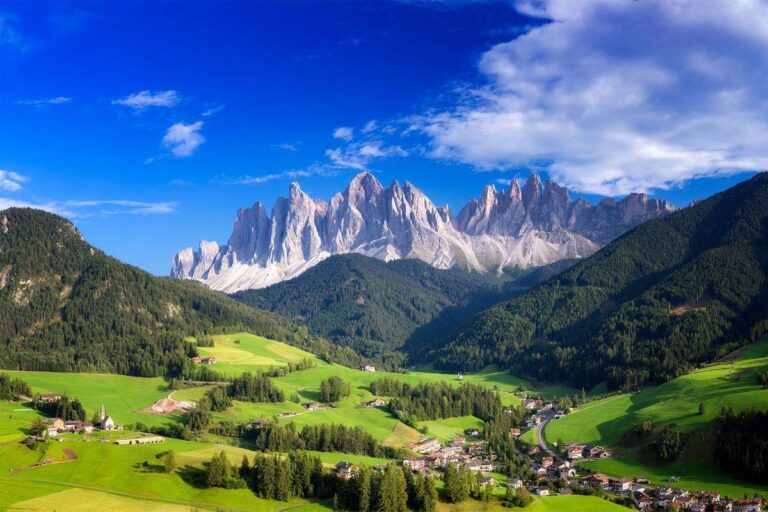This summer, the Italian Alps have emerged as an unexpected hotspot of danger, recording a troubling surge in accidents and fatalities. As outdoor enthusiasts and climbers flock to the towering peaks to take advantage of favorable weather and easing pandemic restrictions, a combination of environmental, social, and safety factors has turned the region into one of the deadliest alpine destinations this season. This article explores the underlying causes behind the alarming rise in incidents, drawing on expert insights and recent data to shed light on why the Italian Alps have become so perilous in 2024.
Rising Temperatures and Unpredictable Weather Patterns Drive Increased Risks
The summer of 2024 has seen the Italian Alps transform into a perilous playground where rising temperatures have exacerbated existing natural hazards. Glaciers and snowfields are retreating at an accelerated pace, destabilizing rock faces and leading to a surge in rockfalls and landslides. Heatwaves cause ice to melt rapidly during the day, only to refreeze at night, creating dangerously slick surfaces for climbers and hikers alike. Mountain rescue teams report an unprecedented increase in incidents related to sudden weather shifts, catching adventurers off-guard without adequate preparation.
Unpredictable weather patterns compound the risks, with erratic thunderstorms and sudden temperature drops becoming the norm rather than the exception. Below is a snapshot comparing average summer conditions from the last decade with this year’s extremes:
| Factor | Summer Avg 2013-2023 | Summer 2024 |
|---|---|---|
| Average High Temp | 22°C | 28°C |
| Thunderstorm Days | 6 | 12 |
| Glacial Melt Rate | 1.8 meters/month | 3.5 meters/month |
- Unexpected freeze-thaw cycles degrade rock stability.
- Rapid snowmelt leads to sudden flooding in valleys.
- Greater variation in daily weather complicates trip planning.
As these volatile climate conditions continue, experts warn that both casual tourists and seasoned mountaineers face elevated dangers in the Alps, underscoring the urgent need for updated safety protocols and real-time weather monitoring.
Surge in Outdoor Enthusiasts Strains Rescue Services and Safety Protocols
This summer, a record-breaking influx of hikers, climbers, and nature lovers has stretched the limits of mountain rescue teams across the Italian Alps. Authorities report an unprecedented 35% spike in emergency calls, many linked to misjudged trail difficulties and rapidly changing weather conditions. Despite well-established safety protocols, the surge has exposed gaps in preparedness, particularly in remote areas where digital connectivity remains unreliable. Rescue squads are now grappling with exhaustion, needing to balance swift responses with the complexity of high-altitude rescues that demand specialized skills and equipment.
To address these challenges, regional governments are implementing new measures aimed at reducing accidents and easing the burden on emergency services. Key initiatives include:
- Real-time trail monitoring via drones and satellite technology
- Enhanced visitor education programs focused on acclimatization and weather awareness
- Expanded rescue team funding to increase manpower and upgrade gear
- Mandatory registration for high-risk routes to improve tracking and rapid response
Below is a comparison of rescue operation statistics from the last three summers, highlighting the increasing scale of incidents:
| Summer | Rescues Conducted | Average Response Time (mins) | Fatalities |
|---|---|---|---|
| 2021 | 275 | 45 | 9 |
| 2022 | 340 | 43 | 14 |
| 2023 | 460 | 38 | 22 |
Expert Tips for Navigating the Italian Alps Safely Amid Growing Dangers
The Italian Alps are experiencing a dangerous spike in accidents due to a combination of extreme weather conditions and increased foot traffic from summer tourists. To stay safe, hikers and climbers must prioritize preparation: carry detailed maps, always check real-time weather updates, and consider hiring a local guide who understands the shifting terrain and avalanche hotspots. Pay close attention to altitude sickness symptoms and avoid overestimating your abilities, especially on unfamiliar routes. Lightweight, waterproof gear isn’t just a comfort-it’s essential for weather that can turn deadly within minutes.
Understanding key warning signs and communication protocols can be lifesaving. Before setting out, share your itinerary with someone off-site and review basic alpine rescue signals. Below is a quick reference table of crucial survival tips for navigating the unpredictable mountain environment:
| Tip | Why It Matters |
|---|---|
| Check Avalanche Bulletins | Reduces risk of deadly snowslides |
| Use GPS Devices | Prevents getting lost in fog or storms |
| Wear Layers | Adapt to sudden temperature drops |
| Keep Emergency Numbers Handy | Ensures timely rescue if needed |
In Conclusion
As the summer season progresses, the rising number of incidents in the Italian Alps serves as a stark reminder of the region’s unpredictable dangers. Experts urge hikers, climbers, and outdoor enthusiasts to exercise heightened caution, stay informed about weather conditions, and respect the challenging terrain. While the allure of the Alps remains undeniable, this season’s fatalities highlight the urgent need for preparedness and vigilance to ensure safety amid these majestic yet perilous mountains.




